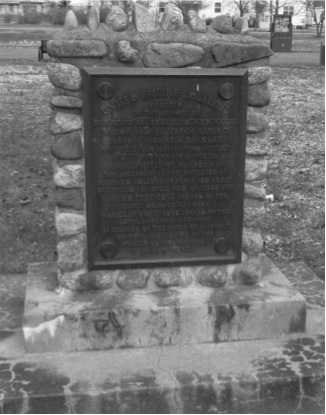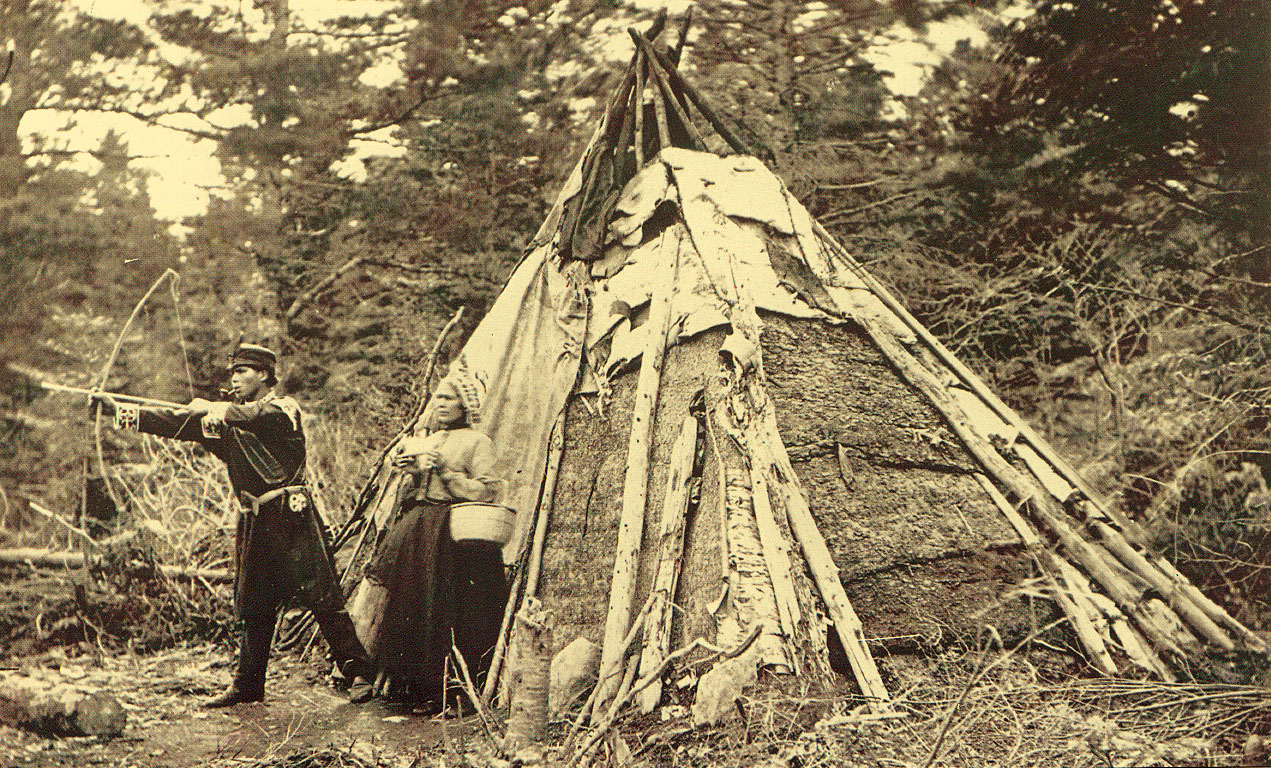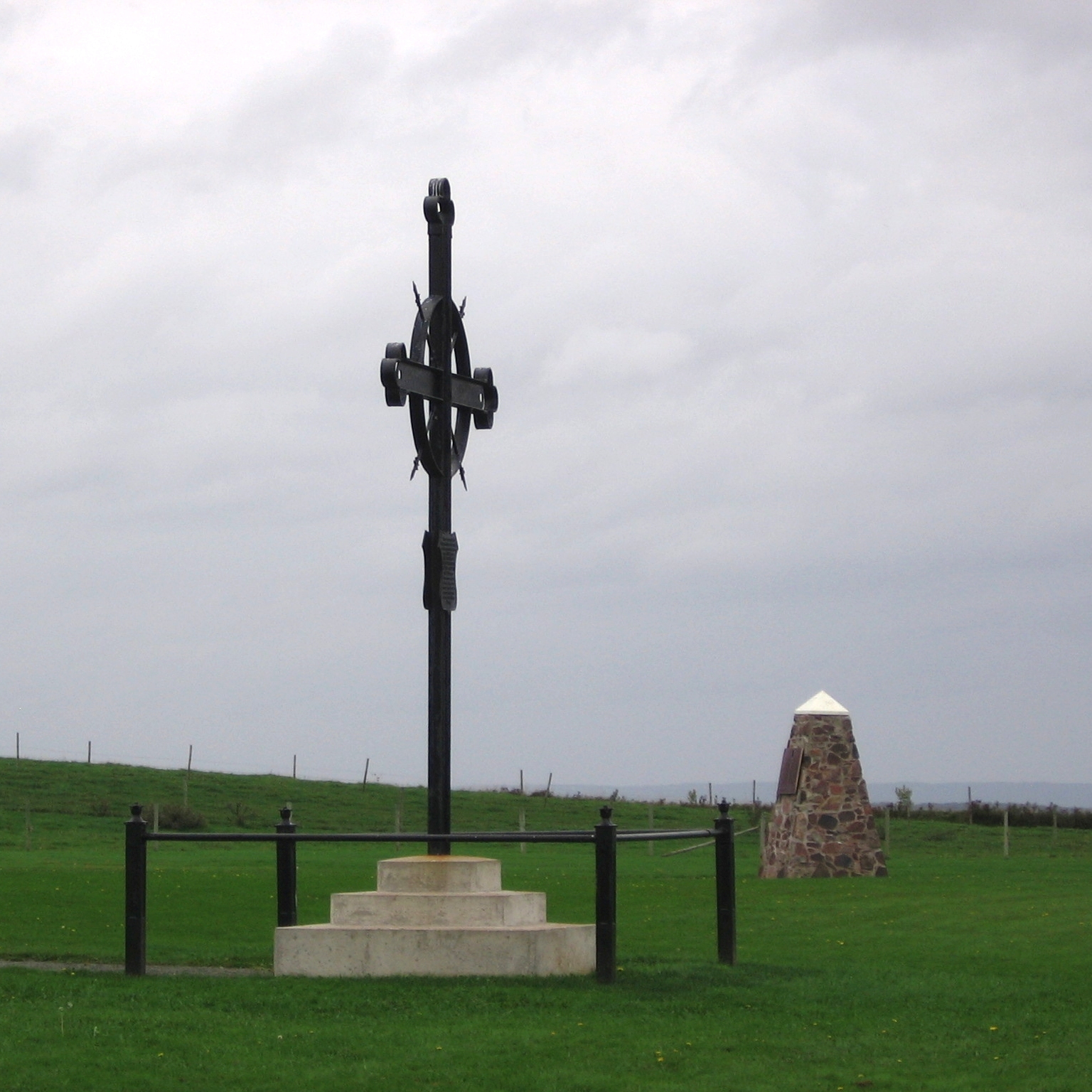|
Cornwallis Township
Cornwallis Township was one of the original townships of Kings County, Nova Scotia. The township was named after Edward Cornwallis, the founder of Halifax, Nova Scotia. It bordered Aylesford Township to the west and Horton Township to the south. While the name has fallen into disuse on maps, overshadowed by the growth of individual towns and villages within the township, many historical places and documents refer to Cornwallis. The Parish of Cornwallis, however, is still in use today by several churches after more than 250 years. History After the French colonists, the Acadians were commanded to leave Nova Scotia in the Great Expulsion, the area was relatively desolate. The Township was established by a group historians refer to as the New England Planters. In the early 1760s the Planters brought with them the colonial pattern of land division; each town or township was to contain one hundred thousand acres. While an official town plot was laid out for Cornwallis Township in wh ... [...More Info...] [...Related Items...] OR: [Wikipedia] [Google] [Baidu] |
Township (Nova Scotia)
A township in Nova Scotia, Canada, was an early form of land division and local administration during British colonial settlement in the 18th century. They were created as a means of populating the colony with people loyal to British rule. They were typically rural or wilderness areas of around that would eventually include several villages or towns. Some townships, but not all, returned a member to the General Assembly of Nova Scotia; others were represented by the members from the county. Townships became obsolete by 1879 by which time towns and counties had become incorporated. Historical background Originally inhabited by Mi'kmaq peoples, the first European colonists to settle in present-day Nova Scotia were the French who arrived in 1605 and founded Acadia. The British conquest of Acadia took place in 1710 and was formalised by the 1713 Treaty of Utrecht which returned Cape Breton Island to the French. This marked the beginning of permanent British control over the pen ... [...More Info...] [...Related Items...] OR: [Wikipedia] [Google] [Baidu] |
Township
A township is a kind of human settlement or administrative subdivision, with its meaning varying in different countries. Although the term is occasionally associated with an urban area, that tends to be an exception to the rule. In Australia, Canada, Scotland and parts of the United States, the term refers to settlements too small or scattered to be considered urban. Australia ''The Australian National Dictionary'' defines ''township'' as: "A site reserved for and laid out as a town; such a site at an early stage of its occupation and development; a small town". The term refers purely to the settlement; it does not refer to a unit of government. Townships are governed as part of a larger council (such as that of a shire, district or city) or authority. Canada In Canada, two kinds of township occur in common use. *In Eastern Canada, a township is one form of the subdivision of a county. In Canadian French, this is a . Townships are referred to as "lots" in Prince Edwar ... [...More Info...] [...Related Items...] OR: [Wikipedia] [Google] [Baidu] |
Canning, Nova Scotia
Canning is a village in northeastern Kings County, Nova Scotia located at the crossroads of Route 221 and Route 358. History The area was originally settled by Acadians who were expelled in 1755 during the Acadian Expulsion. After the Acadians, Canning - first called Apple Tree Landing and later Habitant Corner - was settled in 1760 by New England Planters and by the Dutch following World War II. The present name was adopted in honour of British prime minister George Canning. Though much diminished in importance in recent years, Canning was once a major shipbuilding centre and shipping and rail hub for farmers in Kings County. Canning merchants and farmers founded the Cornwallis Valley Railway which ran from 1889 to 1961, connecting the village to the Dominion Atlantic Railway mainline in Kentville, Nova Scotia. The village suffered three major fires, in 1866, 1868 and 1912. The Canadian parliamentarian Sir Frederick William Borden had a home in Canning. A cousin ... [...More Info...] [...Related Items...] OR: [Wikipedia] [Google] [Baidu] |
Kingsport, Nova Scotia
Kingsport is a small seaside village located in Kings County, Nova Scotia, Canada, on the shores of the Minas Basin. It was famous at one time for building some of the largest wooden ships ever built in Canada.In the Wake of the Windships, Frederick William Wallace, (London, 1927), p. 223. Geography Kingsport is located just northeast of the mouth of the Habitant River, on the west side of Minas Basin, a few miles east of Canning at the eastern end of Route 221. It is bordered by a tidal marsh to the west and sandy beaches to the south and east. Red sedimentary cliffs carved by continuous erosion rise from the beaches to the east. The dramatic 12 metre tides produce very large sand and mud flats at low tide. The village is surrounded by large expanses of fertile farmland. An earlier name was Indian Point, later changed to Oak Point due to the number of oak trees that grew along the bank of the south side of the lower road, leading to the wharf. The name was finally changed to ... [...More Info...] [...Related Items...] OR: [Wikipedia] [Google] [Baidu] |
Kentville
Kentville is an incorporated town in Nova Scotia. It is the most populous town in the Annapolis Valley. As of 2021, the town's population was 6,630. Its census agglomeration is 26,929. History Kentville owes its location to the Cornwallis River which, downstream from Kentville, becomes a large tidal river at the Minas Basin. The riverbank at the current location of Kentville provided an easy fording point. The Mi'kmaq name for the location was "Penooek". The ford and later the bridge in Kentville made the area an important crossroads for other settlements in the Annapolis Valley. Kentville also marked the limit of navigation of sailing ships. Acadian settlement The area was first settled by Acadians, who built many dykes along the river to keep the high Bay of Fundy tides out of their farmland. These dykes created the ideal fertile soil that the Annapolis Valley is known for. The Acadians were expelled from the area in the Bay of Fundy Campaign (1755) by the British authoritie ... [...More Info...] [...Related Items...] OR: [Wikipedia] [Google] [Baidu] |
Port Williams, Nova Scotia
Port Williams is a Canadian village in Kings County, Nova Scotia. It is located on the north bank of the Cornwallis River, named after Edward Cornwallis, first governor of Nova Scotia. As of 2021, the population was 1,110. History The village was once part of the Acadian settlement of Rivière-aux-Canards who created dykes along the river beginning in the late 1600s. These dykes protect valuable farm land that is used by the local agriculture industry every year, and is considered very productive farm land. 18th Century After the Expulsion of the Acadians in 1755, the area around Port Williams was settled by the New England Planters in 1760 as part of Cornwallis Township. The Terry and Lockwood families took up land at the site of Port Williams and the location became known as Terry's Creek. A small wooden bridge was built at Port Williams in 1780, followed by more permanent bridge in the 1830s which attracted more settlement. During the American Revolution the local for ... [...More Info...] [...Related Items...] OR: [Wikipedia] [Google] [Baidu] |
Starr's Point, Nova Scotia
Starrs Point is a community in the Canadian province of Nova Scotia, located in Kings County two miles (3 km) west of Port Williams. Starrs Point faces the Minas Basin to the east and separates the mouths of the Cornwallis River and the Canard River. It is an agricultural area noted for apple orchards. History Starrs Point was called "Nesogwjtk" (eel point) or "Nesoogwitk" (point between two rivers) by the Mi'kmaq People. The point was settled by Acadians in the late 1600 as part of the Rivière-aux-Canards settlement. It was called Boudreau's Point, after the Boudreau family who farmed the point. The Boudreaus also operated a ferry and schooner landing from the north side of the point along the Cornwallis River called Boudreau's Bank, where a flat bank of sandstone allowed schooners to safely beach and unload on at low tide. Acadians from the Rivière-aux-Canards settlement were expelled from this point in the 1755 Bay of Fundy Campaign of the Expulsion of the Acadians ... [...More Info...] [...Related Items...] OR: [Wikipedia] [Google] [Baidu] |
Acres
The acre is a unit of land area used in the imperial and US customary systems. It is traditionally defined as the area of one chain by one furlong (66 by 660 feet), which is exactly equal to 10 square chains, of a square mile, 4,840 square yards, or 43,560 square feet, and approximately 4,047 m2, or about 40% of a hectare. Based upon the international yard and pound agreement of 1959, an acre may be declared as exactly 4,046.8564224 square metres. The acre is sometimes abbreviated ac but is usually spelled out as the word "acre".National Institute of Standards and Technolog(n.d.) General Tables of Units of Measurement . Traditionally, in the Middle Ages, an acre was conceived of as the area of land that could be ploughed by one man using a team of 8 oxen in one day. The acre is still a statutory measure in the United States. Both the international acre and the US survey acre are in use, but they differ by only four parts per million (see below). The most common use o ... [...More Info...] [...Related Items...] OR: [Wikipedia] [Google] [Baidu] |
Town
A town is a human settlement. Towns are generally larger than villages and smaller than city, cities, though the criteria to distinguish between them vary considerably in different parts of the world. Origin and use The word "town" shares an origin with the German language, German word , the Dutch language, Dutch word , and the Old Norse . The original Proto-Germanic language, Proto-Germanic word, *''tūnan'', is thought to be an early borrowing from Proto-Celtic language, Proto-Celtic *''dūnom'' (cf. Old Irish , Welsh language, Welsh ). The original sense of the word in both Germanic and Celtic was that of a fortress or an enclosure. Cognates of ''town'' in many modern Germanic languages designate a fence or a hedge. In English and Dutch, the meaning of the word took on the sense of the space which these fences enclosed, and through which a track must run. In England, a town was a small community that could not afford or was not allowed to build walls or other larger fort ... [...More Info...] [...Related Items...] OR: [Wikipedia] [Google] [Baidu] |
Kings County, Nova Scotia
Kings County is a county in the Canadian province of Nova Scotia. With a population of 62,914 in the 2021 Census, Kings County is the third most populous county in the province. It is located in central Nova Scotia on the shore of the Bay of Fundy, with its northeastern part forming the western shore of the Minas Basin. Kings' economy and identity are tied into its current and historical role as the province's agricultural heartland. A strong agricultural base has been bolstered by the farm-to-table movement and a growing and acclaimed Nova Scotia wine industry, and the success of both has also bolstered the area's tourism industry. The county benefits from the profile, prestige and population gained from hosting both Acadia University in Wolfville and the NSCC Kingstec campus in Kentville. Canadian Forces Base Greenwood (the largest Royal Canadian Air Force base on Canada's East Coast) and the Michelin tire plant in Waterville both provide significant positive economic impact ... [...More Info...] [...Related Items...] OR: [Wikipedia] [Google] [Baidu] |
New England Planters
The New England Planters were settlers from the New England colonies who responded to invitations by the lieutenant governor (and subsequently governor) of Nova Scotia, Charles Lawrence, to settle lands left vacant by the Bay of Fundy Campaign (1755) of the Acadian Expulsion. History Eight thousand Planters (roughly 2000 families), largely farmers and fishermen, arrived from 1759 to 1768 to take up the offer. The farmers settled mainly on the rich farmland of the Annapolis Valley and in the southern counties of what is now New Brunswick but was then part of Nova Scotia. Most of the fishermen went to the South Shore of Nova Scotia, where they got the same amount of land as the farmers. Many fishermen wanted to move there, especially since they were already fishing off the Nova Scotia coast. The movement of some 2000 families from New England to Nova Scotia in the early 1760s was a small part of the much larger migration of the estimated 66,000 who moved to New York's M ... [...More Info...] [...Related Items...] OR: [Wikipedia] [Google] [Baidu] |
Great Expulsion
The Expulsion of the Acadians, also known as the Great Upheaval, the Great Expulsion, the Great Deportation, and the Deportation of the Acadians (french: Le Grand Dérangement or ), was the Ethnic cleansing, forced removal, by the British, of the Acadian people from parts of a Canadian-American region historically known as ''Acadia'', between 1755–1764. The area included the present-day Canadian Maritime provinces of Nova Scotia, New Brunswick, and Prince Edward Island, and the present-day U.S. state of Maine. The Expulsion, which caused the deaths of thousands of people, occurred during the French and Indian War (the North American Theater (warfare), theatre of the Seven Years' War) and was part of the British military campaign against New France. The British first deported Acadians to the Thirteen Colonies, and after 1758, transported additional Acadians to Britain and France. In all, of the 14,100 Acadians in the region, approximately 11,500 were deported, at least 5,0 ... [...More Info...] [...Related Items...] OR: [Wikipedia] [Google] [Baidu] |

.jpg)




.jpg)


